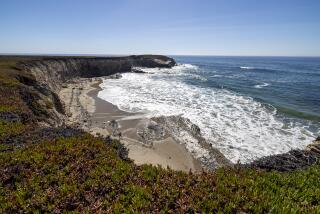Nature Reserve Proposed for Tibet Plain
- Share via
NEW YORK — A cold, wind-swept plain in Tibet populated with scores of birds, plants and animals found nowhere else on Earth has been proposed as the world’s largest nature reserve.
The Chang Tang Reserve, named from the Tibetan words for “northern plain,” would encompass an area the size of California. The proposed territory covers one-sixth of the Tibet Autonomous Region and adjoining parts of the Chinese provinces of Qinghai and Xinjiang, said George Schaller, an American biologist who has explored the region and helped negotiate an agreement signed just days ago.
“It’s one of the last, almost unexplored places on the face of the Earth,” said Schaller, of Wildlife Conservation International in New York. “It survives intact almost as it was 100 years ago.”
Schaller, one of the world’s leading wildlife biologists, has done pioneering studies on gorillas, pandas, snow leopards and other endangered animals.
He is one of the very few Westerners to have entered the Chang Tang region. Few local people have been there, either. Despite its size, it has a human population of no more than several hundred wandering herdsmen who live there for only a few months each year.
When he returned from Chang Tang in late January, he brought with him an agreement with the Tibetan Environmental Protection Agency that outlines the steps to be taken to establish the reserve.
An area of 100,000 square miles, about the size of Colorado, will be set aside in Tibet. The Tibetan EPA will coordinate the effort, with funds from Wildlife Conservation International and Tibetan and national agencies. Proposed additions in adjoining provinces would bring the size of the reserve to about 150,000 square miles, an area just under the size of California.
“We want to, in the next few years, find out what’s there and the areas of particular importance,” Schaller said. He plans to return in July. The research will be conducted with the Tibet Institute of Plateau Biology.
The agreement calls the area “a unique animal and plant community which includes such spectacular creatures as wild yak, Tibetan wild ass, Tibetan wild sheep, Tibetan gazelle, Tibetan antelope and Tibetan brown bear, all of which occur only on the Tibetan plateau.”
When asked to describe the region, he paused, searching for comparisons to convey the vastness and austere beauty of an area unlike any other.
It has “the aura of the Serengeti” in East Africa, he said. “You travel and travel toward a distant horizon, and the world seems to expand in front of you.”
The reserve is a high-altitude steppe at an elevation of about 3 miles. It is covered with scrub grasses no more than 6 inches high, lakes too salty to drink from, and jagged, inhospitable mountains.
Winter temperatures can drop to 40 or 50 degrees below zero. Snow can fall any day of the year. “And the winds,” Schaller said. “Oh, how the winds can howl across there.”
Four hundred species of plants have been found on the plateau, along with 60 species of birds. Wild yak gather in herds of 100 or 150. “It’s a real desert area, but it has oases around which animals congregate” by the thousands, he said.
Access to the reserve is normally by way of Lhasa, the Tibetan capital, a week’s drive south of the proposed reserve. “I’ve gone in from the north by camel caravan, but you cross such desolate country, it’s difficult,” Schaller said.
The trip from Lhasa isn’t a simple excursion either. “You need two cars and a truck to carry gas,” he said. Because of the need to carry gas, expeditions normally last no more than three months, he said.
“My preference would be to just have a herd of yak animals and live in there for a few years,” he said. “But politically that’s not feasible.” Schaller is willing, but “most of the local people have families and they don’t want to be out,” he said.
In an area so remote, is the establishment of a nature reserve really necessary?
“There is no such thing as a remote area anymore,” Schaller said. “It’s known there are minerals there. Near there oil has been discovered.”
More to Read
Sign up for Essential California
The most important California stories and recommendations in your inbox every morning.
You may occasionally receive promotional content from the Los Angeles Times.












